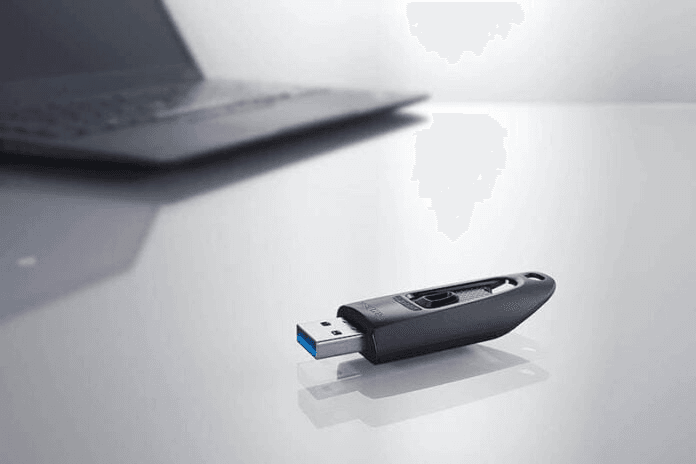Introduction
Before delving into the backup methods, let's understand the importance of taking a backup of your Windows 11 system and the benefits of storing it on a pendrive. A backup serves as a safety net for your data, protecting it from accidental deletion, hardware failures, malware attacks, or system crashes. By storing the backup on a pendrive, you have a portable solution that allows you to easily carry and restore your system on any compatible device.
Method 1: Using Windows 11 Backup and Restore Tool
Windows 11 provides a built-in Backup and Restore Tool that offers a simple way to create a backup of your system. Follow these steps to create a backup on a pendrive:
- Connect the pendrive to your Windows 11 laptop or PC.
- Type "Backup settings" in the Windows search bar and open the "Backup settings" app.
- Click on "Go to Backup and Restore (Windows 7)".
- Select "Create a system image" from the left-hand menu.
- Choose the pendrive as the backup location.
- Select the drives you want to include in the backup and click "Next".
- Review the backup settings and click "Start backup" to initiate the backup process.
- Windows 11 Backup and Restore Tool will create a backup of your system on the pendrive.
Method 2: Using Third-Party Backup Software
Alternatively, you can opt for third-party backup software that provides more advanced features and flexibility. Here are the steps to create a backup on a pendrive using third-party software:
- Research and select a reliable backup software that supports Windows 11 and allows backup creation on pendrives.
- Download and install the chosen backup software on your Windows 11 system.
- Launch the backup software and select the option to create a system backup.
- Choose the pendrive as the backup destination.
- Configure the backup settings, such as compression level and encryption (if desired).
- Start the backup process, and the software will create a backup of your Windows 11 system on the pendrive.
Method 3: Creating a System Image
Another method to take a backup of your Windows 11 system is by creating a system image. A system image is an exact copy of your entire operating system, including the system files, installed applications, and personal files. Follow these steps to create a system image backup on a pendrive:
- Connect the pendrive to your Windows 11 laptop or PC.
- Open the Windows 11 "Settings" by pressing Windows Key + I.
- Go to "System" and select "Storage".
- Scroll down and click on "Advanced storage settings".
- Under "Backup options," click "Back up now" and choose the pendrive as the backup location.
- Follow the on-screen instructionsto create a system image backup on the pendrive.
Best Practices for Windows 11 Backup – AOMEI Cyber Backup
In today's digital age, taking regular backups of your Windows 11 system is crucial to safeguard your valuable data and ensure quick recovery in the event of data loss, hardware failure, or system crashes. AOMEI Cyber Backup is a reliable and feature-rich backup software that can help you implement effective backup strategies. Here are some best practices to consider when using AOMEI Cyber Backup for Windows 11 backup:
- Choose the Right Backup Type: AOMEI Cyber Backup offers various backup types, such as system backup, disk backup, partition backup, and file backup. Assess your requirements and choose the appropriate backup type based on the level of data protection you need. For complete system recovery, a system backup or disk backup is recommended.
- Schedule Regular Backups: Set up a regular backup schedule to ensure that your data is consistently protected. AOMEI Cyber Backup allows you to schedule automatic backups at specific intervals, such as daily, weekly, or monthly. By automating the backup process, you can minimize the risk of data loss and ensure that your backups are up to date.
- Incremental and Differential Backup: AOMEI Cyber Backup supports incremental and differential backup methods, which can significantly reduce backup time and storage space. Incremental backup only backs up the changes made since the last backup, while differential backup backs up the changes made since the last full backup. Consider using these methods to optimize backup efficiency.
Download FreewareWindows Server & PC
Backup Steps:
- Download and Install AOMEI Cyber Backup: Visit the official AOMEI website, download the latest version of AOMEI Cyber Backup, and install it on your Windows system.
- Launch AOMEI Cyber Backup: After installation, launch AOMEI Cyber Backup from the desktop or Start menu.
- Select "System Backup": In the main interface of AOMEI Cyber Backup, click on the "Backup" tab, and then select "System Backup" from the options.
- Choose Backup Destination: Click on the "Step 1" button to select the destination where you want to store the backup. You can choose an external hard drive, network-attached storage (NAS), or any other suitable location.
- Configure Backup Options: In "Step 2," you can configure various backup options. You can choose to enable encryption for added security, set compression level to optimize backup size, and enable email notifications for backup completion.
- Schedule Backup (Optional): In "Step 3," you can set up a backup schedule if you want to automate the backup process. You can choose daily, weekly, monthly, or event-triggered backups according to your preferences.
- Start the Backup: After configuring the backup options, click on the "Start Backup" button to initiate the backup process. AOMEI Cyber Backup will create a backup of your Windows system according to the specified settings and store it in the selected destination.
Restore Steps:
- Launch AOMEI Cyber Backup: Open AOMEI Cyber Backup on your Windows system.
- Click on "Restore": In the main interface, click on the "Restore" tab.
- Select Backup Image: In "Step 1," choose the backup image that you want to restore. You can select a backup file from a local destination or a network location.
- Choose Restore Destination: Click on the "Step 2" button to select the destination where you want to restore the backup. Ensure that the destination has enough space to accommodate the restored system.
- Restore Options: In "Step 3," you can choose additional restore options, such as restoring system to a different location or restoring specific partitions.
- Start the Restore: After configuring the restore options, click on the "Start Restore" button to begin the restoration process. AOMEI Cyber Backup will restore your Windows system from the selected backup image to the specified destination.
- Reboot and Verify: Once the restoration is complete, AOMEI Cyber Backup will prompt you to reboot your system. After rebooting, verify that the restored system is functioning correctly.
Conclusion
Creating a backup of your Windows 11 system is essential to protect your valuable data and ensure a quick recovery in case of any unforeseen events. Storing the backup on a pendrive offers portability and convenience, allowing you to easily restore your system on any compatible device. In this article, we explored different methods to take a Windows 11 backup in a pendrive, including using the built-in Windows 11 Backup and Restore Tool, third-party backup software, and creating a system image. By following these methods and best practices, you can safeguard your Windows 11 data and have peace of mind knowing that you can restore your system whenever needed. Remember to regularly schedule backups, verify their integrity, and choose a reliable pendrive for storing your backups.




